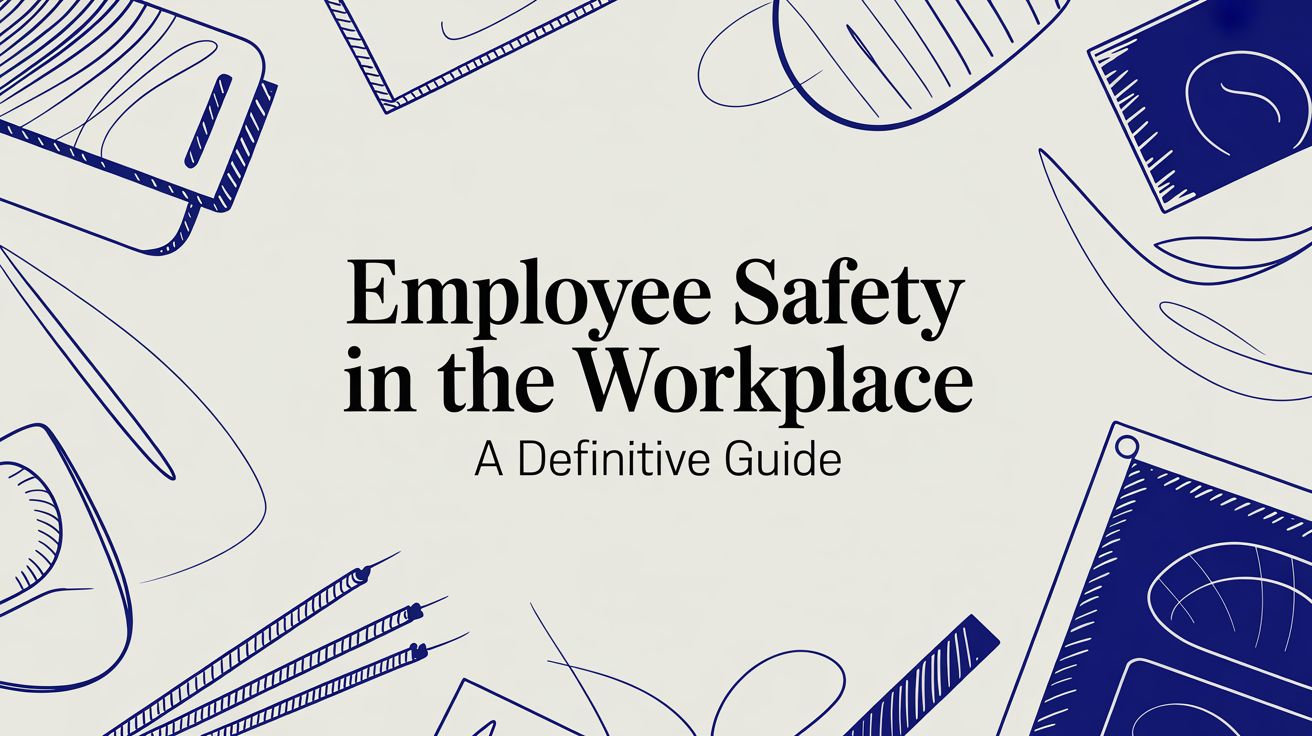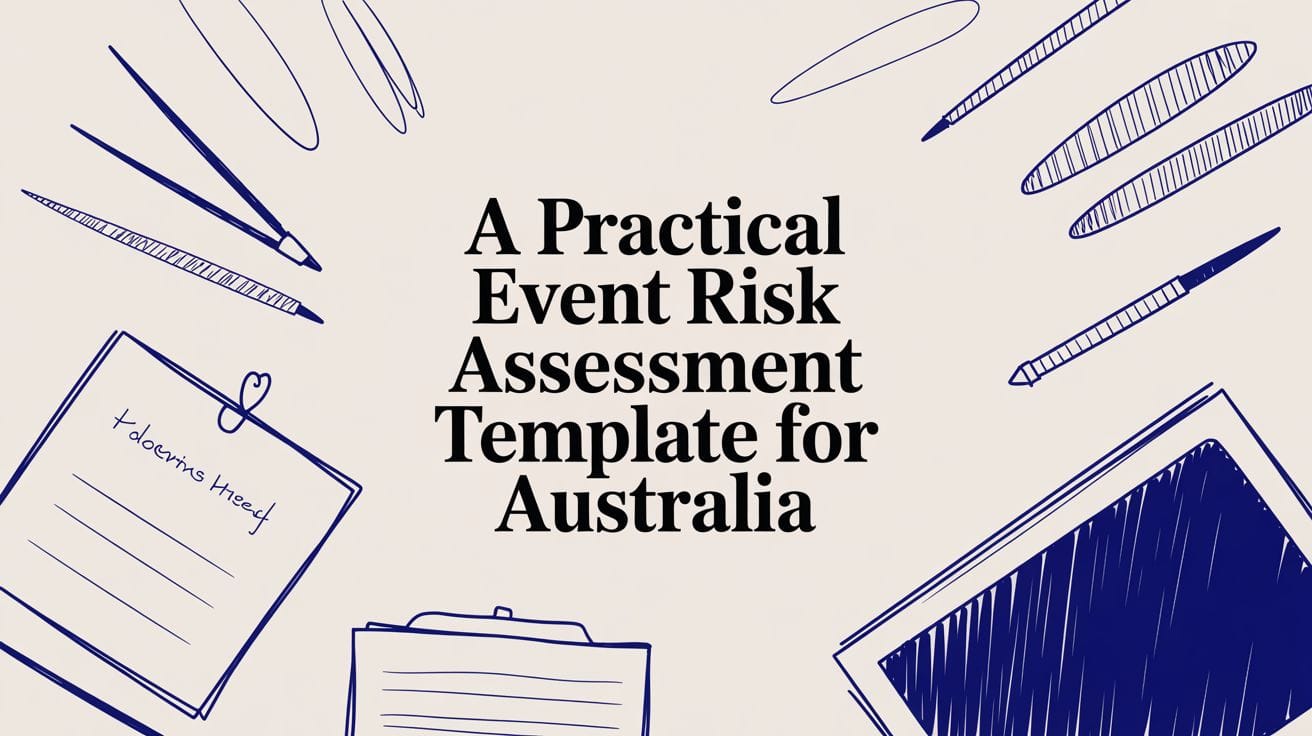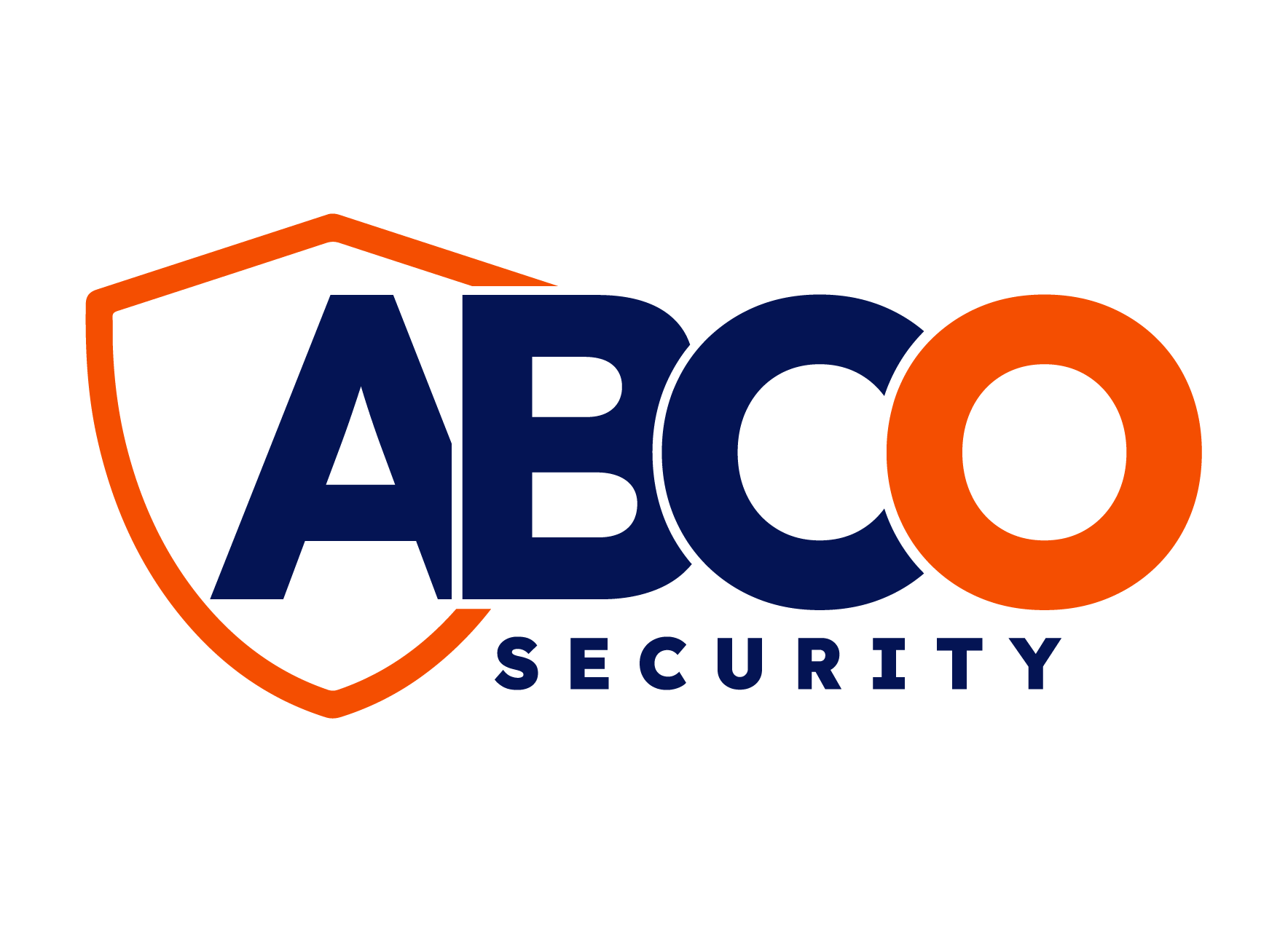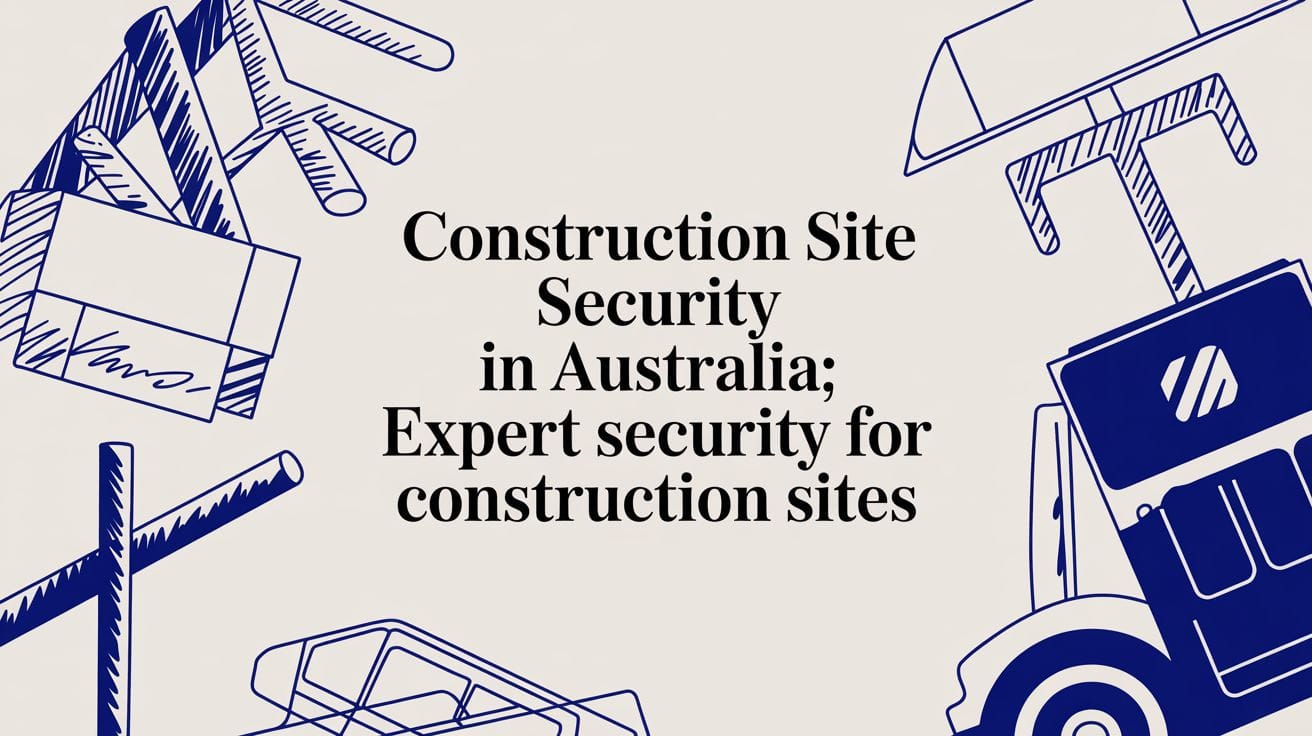
An effective security plan for a construction site is more than just a fence. It’s a comprehensive strategy combining physical barriers, modern technology, and professional oversight to protect your assets and ensure worker safety.
Viewing security as a core part of risk management is crucial. A proactive approach prevents costly project delays, budget overruns, and serious on-site accidents, safeguarding your investment from day one.
Understanding Key Risks at Australian Construction Sites
Construction sites are dynamic environments, filled with valuable assets like heavy machinery, copper wiring, and tools. This makes them a prime target for theft, vandalism, and other threats.
A thorough understanding of the full spectrum of risks is essential for creating a security plan that delivers real protection. These risks typically fall into two categories: asset loss and safety hazards. A reliable Security Company in Melbourne understands that a holistic approach is needed to create a secure and safe environment for everyone on site.
Common Threats to Construction Projects
The vulnerabilities of a construction site change daily as the project evolves. A proactive security strategy is vital to stay ahead of potential threats.
Common risks include:
- Theft: From opportunistic theft of tools to organised crews targeting heavy equipment or materials like copper.
- Vandalism: Malicious damage to machinery, newly installed fixtures, or building materials can halt progress and lead to expensive repairs.
- Unauthorised Access: Trespassers, whether curious locals or potential thieves, pose a significant liability and safety risk.
- Internal Threats: A portion of site theft can be internal, making strict asset tracking and access control essential.
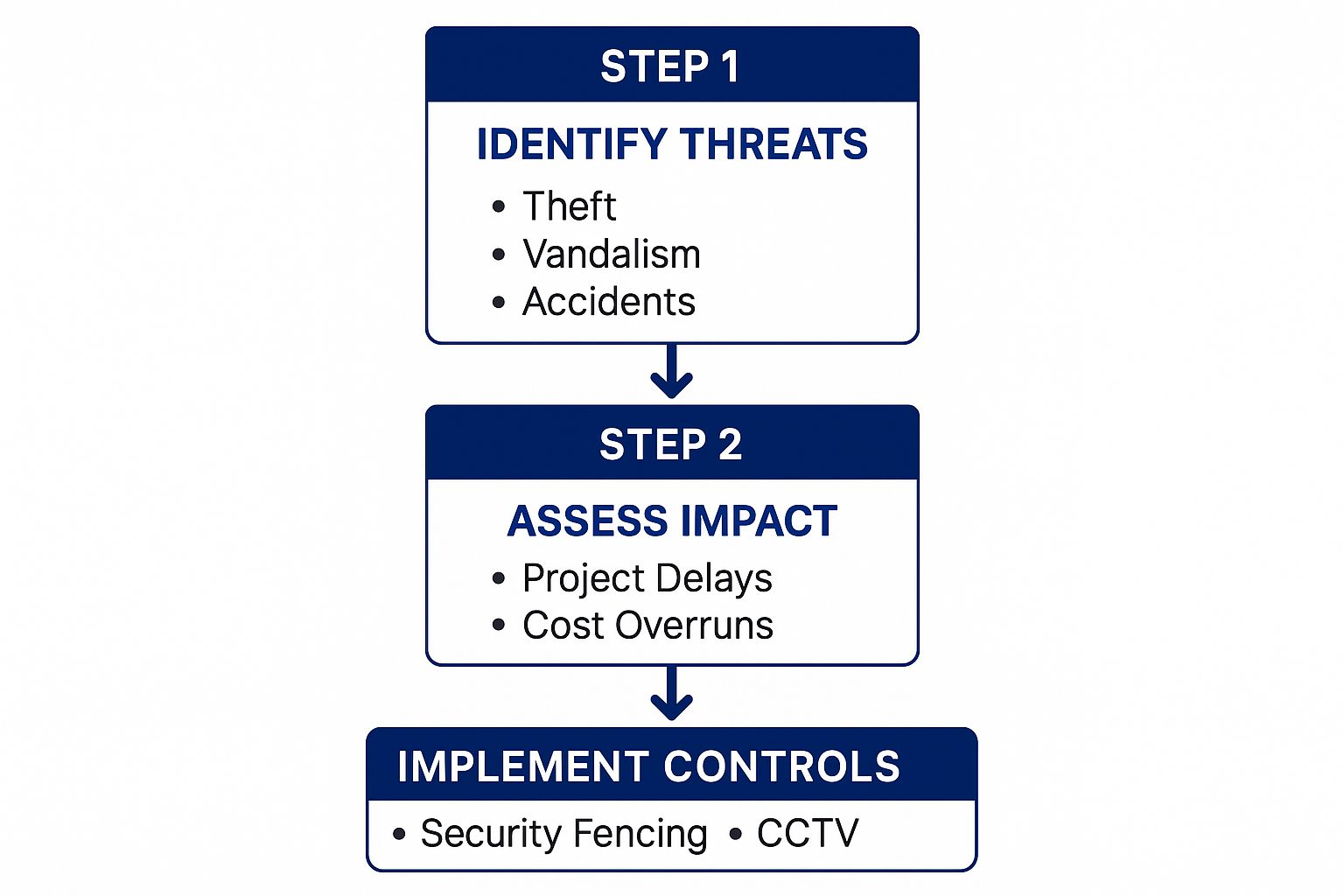
Effective security is a continuous cycle of threat identification, risk assessment, and implementing appropriate controls.
Primary Threats and Mitigation Strategies
| Threat Type | Description | Primary Mitigation Strategy |
|---|---|---|
| Asset Theft | Unauthorised removal of tools, equipment (excavators, loaders), and valuable materials like copper, timber, or fuel. | Implement a layered defence with secure perimeter fencing, controlled access points, CCTV surveillance, and regular security patrols. |
| Vandalism | Deliberate damage to property, machinery, or completed work, often occurring after hours or on weekends. | Install high-visibility security lighting, motion-activated cameras, and clear signage. Regular patrols act as a strong deterrent. |
| Unauthorised Entry | Individuals entering the site without permission, creating significant safety and liability risks. | Ensure all entry points are secured with industrial-grade locks. Post clear “No Trespassing” and danger signs. |
| Worker Safety Hazards | Risks of on-site accidents due to uncontrolled access, insufficient monitoring, or failure to follow safety protocols. | Enforce a strict sign-in/sign-out policy, require safety inductions for all personnel, and have security on hand to monitor compliance. |
| Internal Theft | Theft committed by employees or contractors who have legitimate access to the site. | Maintain a detailed inventory of tools and materials. Implement a check-out/check-in system for high-value equipment. |
This table provides a basic framework, but a truly effective plan must be tailored to your site’s specific layout and challenges.
The Importance of On-Site Safety and Compliance
Beyond asset protection, the primary role of construction site security is to maintain a safe environment. An uncontrolled site is a dangerous one, with significant legal and financial consequences.
Statistics from Safe Work Australia highlight the risks. The construction industry has one of the highest rates of workplace fatalities, underscoring the need for robust safety measures. You can discover more insights about these construction safety risks to understand the gravity of the situation.
A secure perimeter and controlled access are fundamental to meeting your Work Health and Safety (WHS) obligations and preventing tragic accidents.
Integrating security for construction sites with safety protocols is non-negotiable. This includes preventing unauthorised vehicle access, ensuring only inducted personnel are present, and having a rapid response plan for emergencies. Professional security, such as dedicated mobile security patrols, is essential for enforcing these vital safety rules.
Request a Professional Security Assessment Today
Perimeter Security and Access Control Solutions
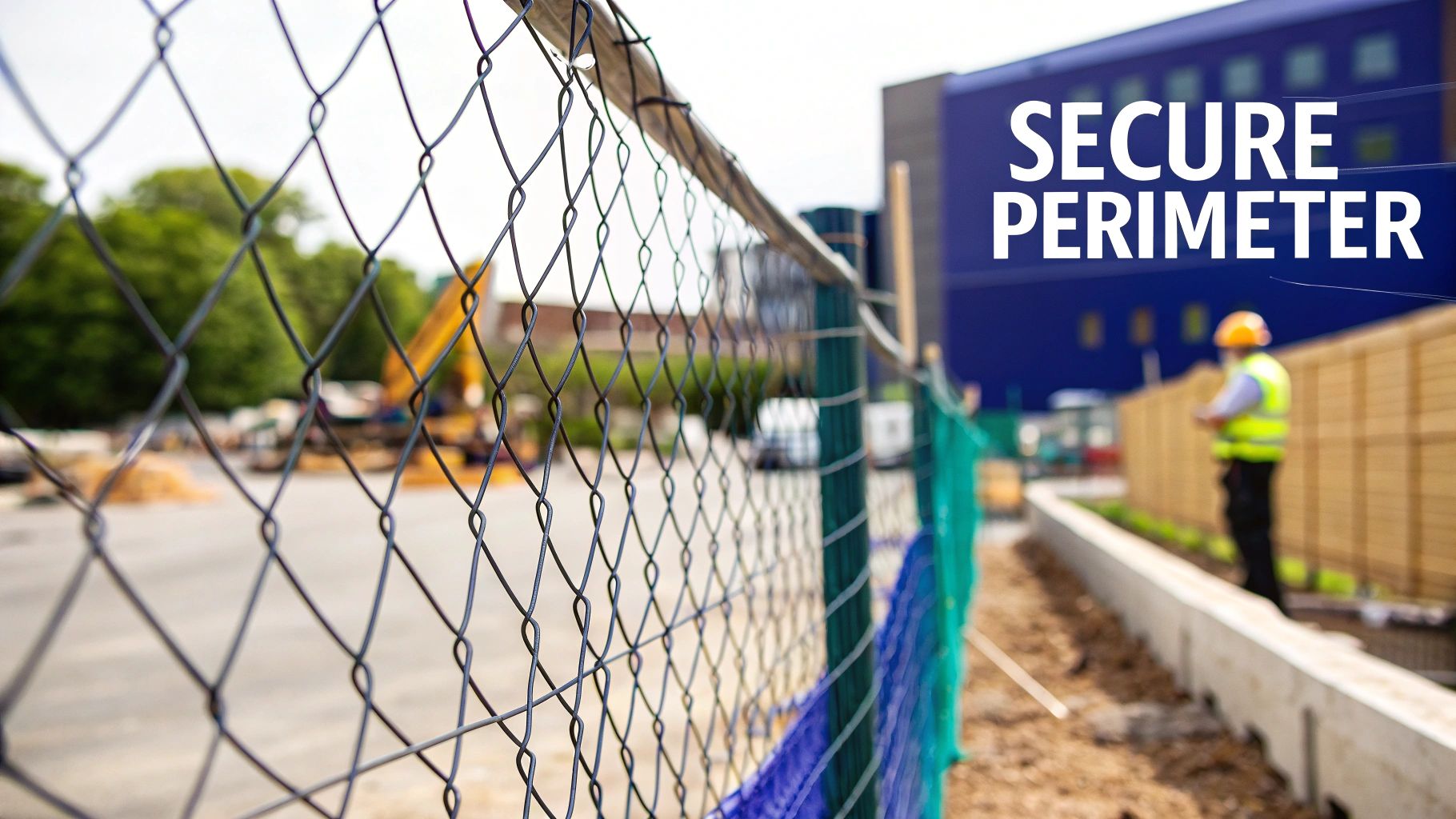
Your first line of defence is a secure perimeter. It forms the foundation of your entire security for construction sites plan, sending a clear message that the area is controlled and monitored.
A well-defined boundary is a powerful deterrent against opportunistic theft and vandalism, making potential intruders think twice before attempting to gain entry.
Choosing the Right Fencing for Your Site
The type of fencing you choose should match your site’s specific risks, location, and the value of the assets being protected.
Practical options for Australian construction sites include:
- Anti-Climb Mesh Fencing: The industry standard for high-risk sites. Its tight mesh pattern makes it extremely difficult to climb, offering superior protection for valuable equipment.
- Solid Hoarding Panels: Ideal for urban areas, these panels provide security while also offering privacy and dust control. They can also be used for project branding.
- Temporary Chain-Link Fencing: A cost-effective solution for lower-risk projects or for creating secure zones within a larger site perimeter.
Ensure your chosen fencing is professionally installed without gaps and is regularly inspected for damage to maintain its integrity.
Establishing a Single Point of Entry
To maximise security, all traffic—staff, contractors, and deliveries—should be channelled through a single, controlled entry and exit point. Multiple entry points create security gaps that are difficult to monitor effectively.
This single-entry approach simplifies access management and transforms one location into the central hub for your site’s security and safety protocols.
A single, monitored gatehouse changes your perimeter from a passive barrier into an active security system. It’s a practical step to prevent unauthorised access and track all site movements.
This strategy is not just about security; it is a core component of effective site safety management, ensuring everyone on-site is properly inducted and accounted for.
Implementing Strict Access Control Protocols
With a single entry point established, you need clear, non-negotiable rules. A professional security officer at the gate ensures these protocols are consistently followed. Understanding advanced access control for business security can help you build a more robust defence.
Essential access control procedures include:
- Mandatory ID Checks: All personnel must present valid ID or a site-specific access card.
- Strict Sign-In/Sign-Out Logs: A detailed log must record the name, company, and entry/exit times for everyone, creating a clear audit trail.
- Visitor Escort Policy: All visitors must be signed in by a host and escorted at all times to prevent them from entering hazardous areas.
Pairing these disciplined measures with modern electronic security solutions streamlines access management and enhances accountability across your project.
Book a Site Security Consultation Now
24/7 Surveillance with Security Technology
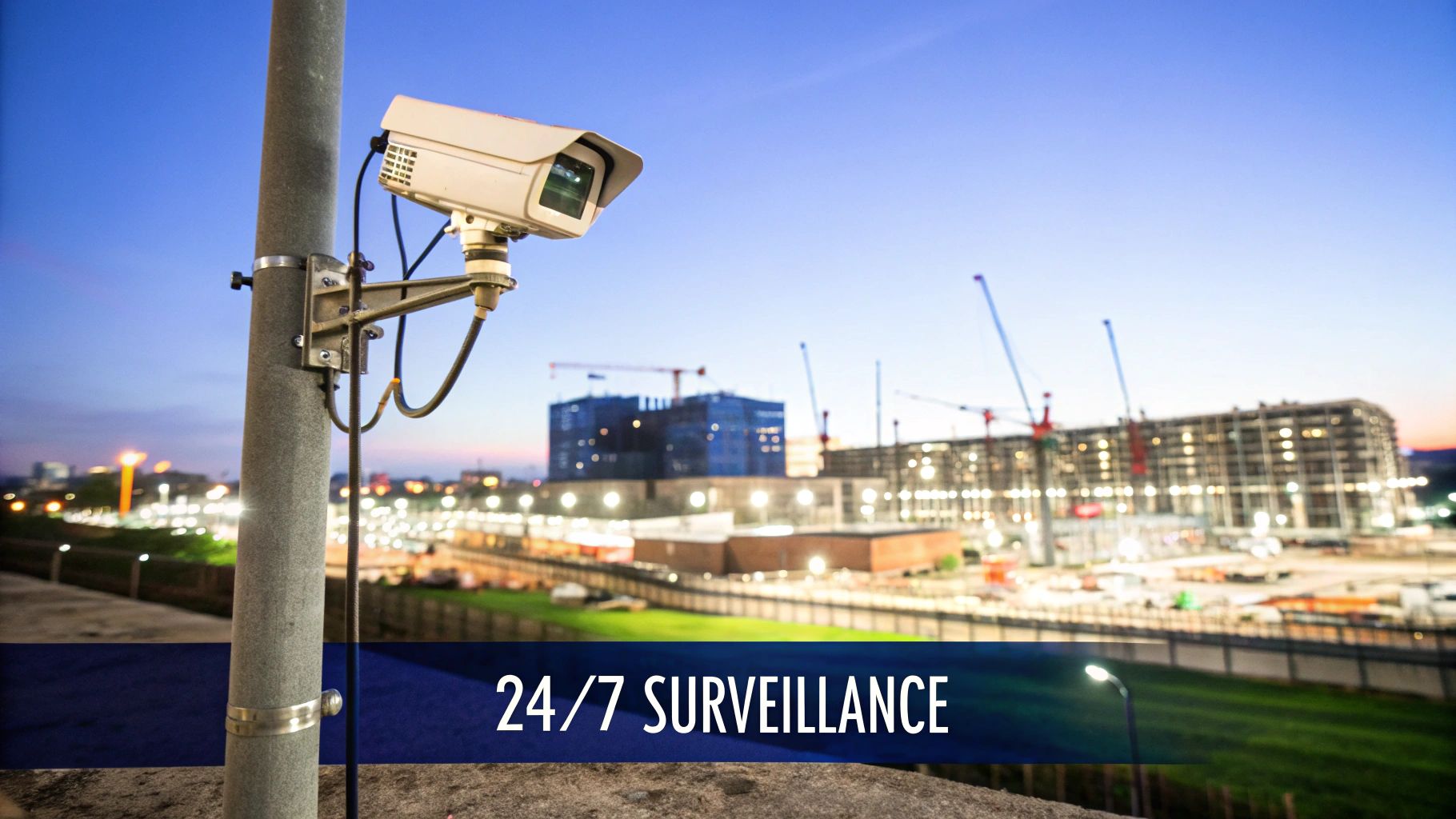
While fences and guards provide a physical presence, technology elevates your security for construction sites by offering 24/7 oversight. Modern surveillance tools provide real-time data to stop incidents as they happen.
Implementing the right technology transforms your security from a simple deterrent into an intelligent, active system that protects your assets around the clock.
Strategic CCTV Camera Placement
High-definition (HD) CCTV cameras are a non-negotiable component of any serious security plan. Today’s cameras offer exceptional clarity and night vision capabilities, capturing clear evidence even in low-light conditions.
Strategic placement is key to eliminating blind spots and monitoring high-risk areas. Focus on:
- Entrances and Exits: To log all vehicle and personnel movements.
- Material Storage Areas: To protect valuable materials like copper and timber.
- Fuel Depots and Heavy Equipment: To monitor high-value assets.
- Perimeter Fence Lines: To detect breach attempts before intruders gain access.
For remote or large sites, solar-powered mobile camera units offer a flexible solution that can be repositioned as the site layout changes.
Leveraging Advanced Monitoring Features
Modern surveillance systems offer more than just recording. Advanced features like AI-powered video analytics automate threat detection, reducing false alarms and allowing your security team to focus on genuine incidents.
These intelligent systems can differentiate between a person, a vehicle, and environmental factors like animals or debris. This means you only receive alerts for credible threats, such as a person detected in a restricted zone after hours.
Motion-detection alarms, when combined with AI analytics, create a proactive security system. This ensures that every alert is vetted and demands immediate attention, making your response more efficient.
This smart filtering builds confidence, as your security team knows that an alert signifies a probable threat that requires action.
The Role of Professional Monitoring
A CCTV system is only truly effective when backed by professional oversight. Without it, your cameras merely record evidence after a theft has already occurred. Back-to-base monitoring provides a dedicated team of security professionals watching over your site.
With professional CCTV and alarm monitoring, a trained operator assesses every alert in real-time. They can verify the threat, use on-site speakers to warn off intruders, and dispatch a mobile patrol or contact the police. This active, human-led response is what prevents a potential break-in from becoming a major loss.
This level of oversight is also crucial for demonstrating safety compliance. A clear video record helps enforce your safety protocols and serves as proof of your due diligence.
The Value of Professional Security Guard Patrols
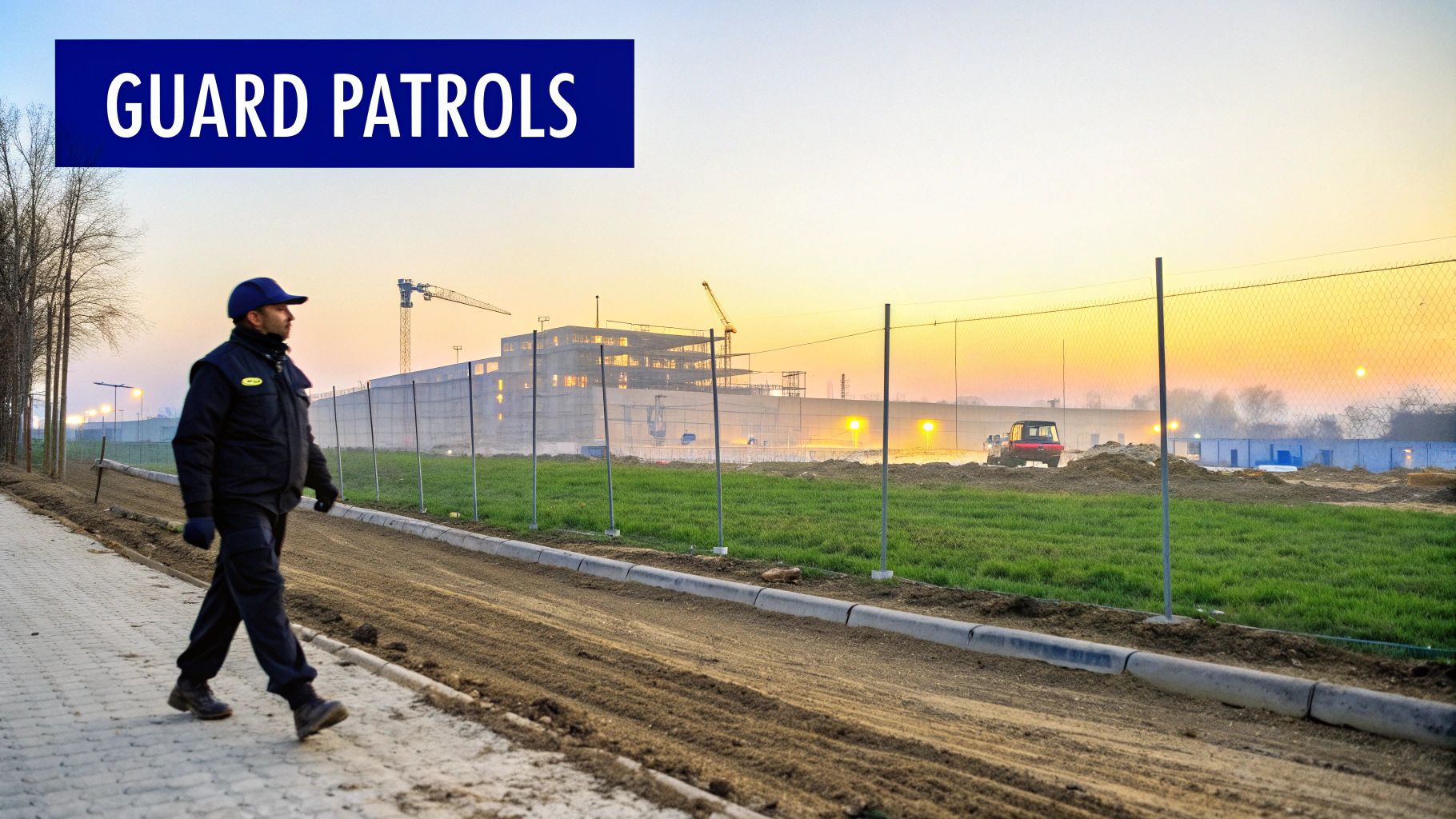
Technology provides surveillance, but it cannot physically intervene. That’s where licensed security guards bring a crucial human element of judgment and immediate response to your security for construction sites.
A visible guard in a high-visibility uniform is often the most effective deterrent to theft and vandalism. Their role extends beyond observation; they are trained to assess situations and act decisively, providing hands-on protection that technology cannot replicate.
Choosing Between Static Guards and Mobile Patrols
Understanding the different types of guarding is key to building an effective security plan. A blended approach often yields the best results.
- Static Guards: Positioned at critical points like the main gate, they are ideal for access control during operational hours. They manage the flow of people and vehicles, check credentials, and log visitors.
- Mobile Patrols: These patrols conduct randomised checks of the entire property, creating a powerful deterrent. Their unpredictable schedule makes it difficult for potential intruders to plan a breach, making them perfect for after-hours security.
Key Responsibilities of On-Site Guards
The duties of a construction site guard are varied and vital for both security and safety. They are the frontline enforcers of your site’s rules.
Core tasks include:
- Performing Lock-Up Procedures: Methodically securing all gates, buildings, and storage containers at the end of each day.
- Checking Perimeter Integrity: Regularly walking the fenceline to identify signs of tampering or potential breach points.
- Responding to Alarms: Acting as the immediate on-site response to verify threats and liaise with emergency services.
- Maintaining Detailed Logs: Documenting all patrols, incidents, and observations to provide a clear record for reports and insurance claims.
These duties highlight why partnering with a reputable Security Company in Melbourne is essential. Learn more about professional security guard services here.
Ensuring Compliance and Professionalism
It is crucial that your security personnel are fully licensed, professionally trained, and compliant with Australian industry standards. Guards must hold the correct state-issued security licence and be trained in conflict resolution, first aid, and Work Health and Safety (WHS) protocols.
A well-trained guard not only deters crime but also contributes to a safer worksite. Their presence helps enforce safety policies, reinforcing a strong safety culture across the project.
For example, a recent WorkSafe Queensland report here highlighted compliance gaps on many sites. Professional guards can act as an extra set of eyes, identifying and reporting safety hazards before they lead to an accident.
Request a Quote for Security Guard Services
Developing a Comprehensive Site Security Plan
https://www.youtube.com/embed/PHFWCQhwBpk
A documented security and emergency plan is essential for building a structured and resilient site. This plan is not just about meeting regulatory requirements; it’s a practical playbook that prepares your team for any eventuality.
Your plan should outline clear protocols, assign responsibilities, and establish a chain of command. This preparation is fundamental to maintaining control and protecting your people and assets.
Conducting Regular Risk Assessments
A construction site is constantly changing, creating new vulnerabilities. Regular risk assessments are crucial to adapt your security measures as the project evolves.
A simple walkthrough on a weekly or monthly basis can help you identify new or changing hazards. Focus on:
- New Blind Spots: Check if new structures obstruct CCTV camera views.
- Material Storage: Ensure valuable materials are stored securely from the moment they arrive.
- Perimeter Weaknesses: Look for any new, unofficial entry points in the fence line.
Identifying these issues early allows you to adapt your security strategy, such as repositioning a camera or adjusting a guard’s patrol route.
Creating a Clear Emergency Response Plan
In an emergency, a clear and well-rehearsed response plan is your best defence against chaos. Everyone on site must understand their role to ensure a fast, organised response.
Your plan should include specific instructions for various scenarios:
- Medical Emergencies: Identify first aid officers and list contact details for the nearest medical facilities.
- Fire: Detail the location of fire extinguishers, evacuation paths, and assembly points.
- Security Breaches: Outline who to contact first and how to secure the area without compromising evidence.
A solid emergency plan requires a clear communication tree. Knowing who to call in a crisis saves precious time and ensures the right people are mobilised immediately.
Defining these protocols before an incident occurs is what separates a managed event from a full-blown disaster. If you need assistance, get in touch with our security specialists.
Adhering to Australian Industry Standards
Compliance with industry standards is a mark of professionalism. The Australian Security Industry Association Limited (ASIAL) sets the code of practice that all reputable security firms in Australia follow.
Partnering with an ASIAL member provides peace of mind that you are working with a company committed to ethical conduct, proper licensing, and ongoing training. This ensures your security is not only effective but also fully compliant.
Book a Professional Security Consultation Today
FAQs on Construction Site Security
Navigating the complexities of security for construction sites can be challenging. Here are answers to common questions from project managers to help you make informed decisions.
What is the first step in securing a construction site?
Your first priority should be to establish a strong, controlled perimeter. This involves installing high-quality security fencing and channelling all traffic through a single, monitored entry and exit point. Without solid access control, other security measures are less effective.
Are mobile patrols better than a static guard?
Neither is inherently “better”; they serve different purposes. A static guard is ideal for controlling a main gate during work hours, managing access for all personnel and vehicles. Mobile patrols excel after hours, using randomised routes to create a powerful deterrent against intruders. For most projects, a combination of both is the most effective solution.
How much does construction site security cost?
The cost varies depending on several factors:
- The size and location of your site.
- The value of the materials and equipment being protected.
- The specific services required (e.g., number of guards, type of technology).
Security should be viewed as an investment in risk mitigation, not just an expense. The cost of a single major theft or act of vandalism can far exceed the investment in a comprehensive security plan.
Can I just rely on CCTV cameras for security?
Relying solely on CCTV is a common mistake. While cameras are excellent for recording events and providing evidence, they cannot physically stop a crime in progress. An effective plan layers technology with a human response. Your cameras should be connected to a professional back-to-base monitoring service with a dedicated mobile patrol team ready to respond to alerts immediately. You can find more answers on our comprehensive security FAQs page.
When selecting a security provider, ensure they adhere to industry best practices, such as those set by the Australian Security Industry Association Limited (ASIAL). This is your assurance of professional, high-quality service.
At ABCO Security, we create tailored security solutions for Australian construction sites, combining licensed guards and modern technology to protect your assets and keep your project on track.
Secure your site with confidence. Book your professional security consultation today.
https://abcosecurity.com.au/service-booking/
